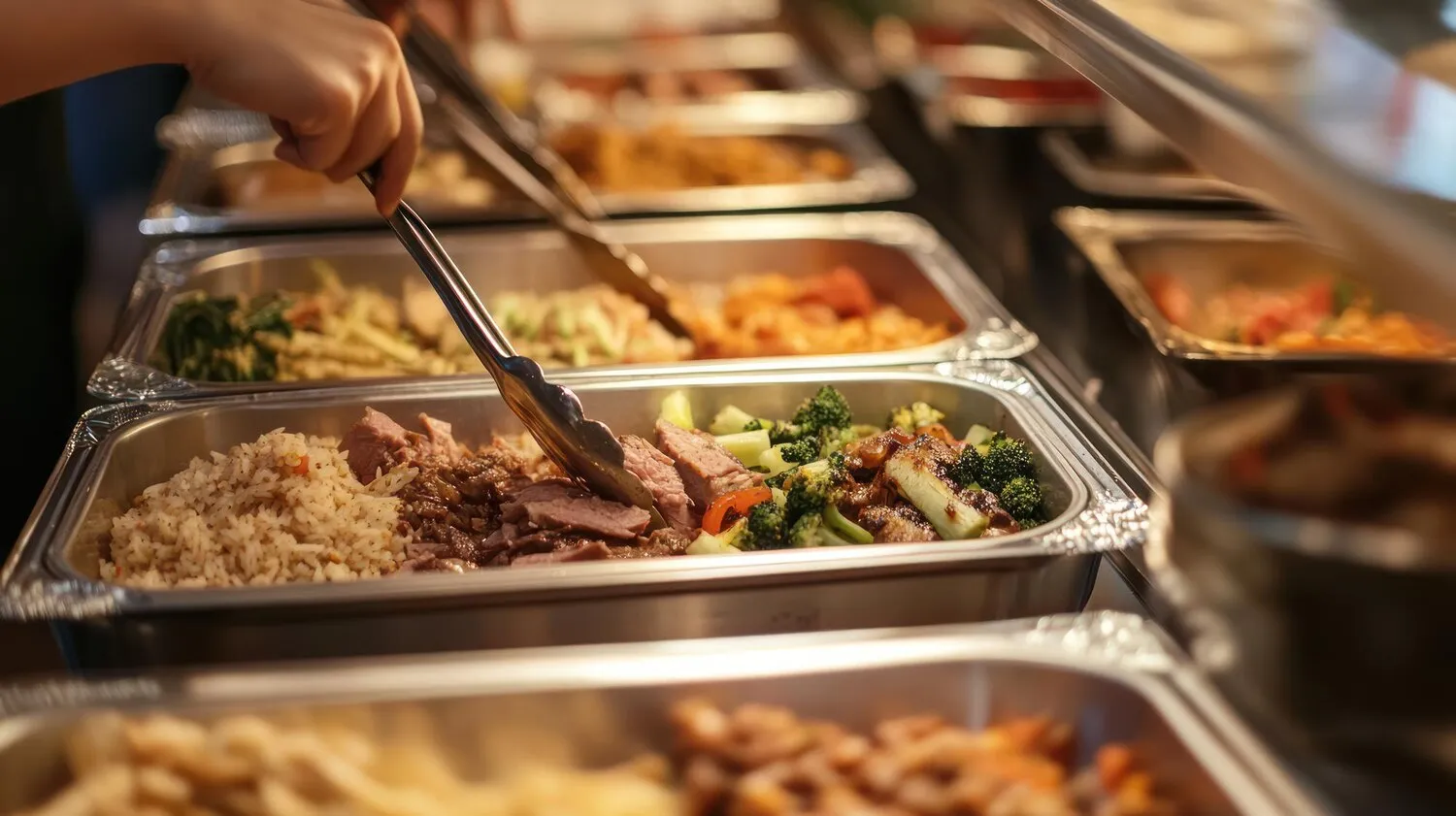
Buffet with hot and cold dishes
Offers a variety of accompaniments and salads.
Nutrition Facts
* The % Daily Value (DV) tells you how much a nutrient in a serving of food contributes to a daily diet. 2,000 calories a day is used for general nutrition advice.
Jane churrascaria
The concept of a buffet, offering a variety of dishes in a self-serve format, has roots in various cultures. The Swedish 'smörgåsbord', a table laden with breads, butter, cheese, and smoked fish, dates back to the 12th century. French buffets gained popularity in the 18th century as sideboards displaying food. Modern buffets are a global phenomenon, evolving with increased travel and culinary exchange.
Buffets are often associated with celebratory occasions, large gatherings, and convenience. They represent abundance and variety, allowing guests to sample a wide array of culinary options and cater to different dietary preferences.
Social Gatherings
Buffets are popular for weddings, corporate events, and family reunions because they cater to a large number of guests with varying tastes. They encourage social interaction as people move around and choose their food.
Convenience and Efficiency
Buffets offer a convenient and efficient way to serve food to a large group of people. They reduce the need for individual orders and table service, streamlining the dining experience.
Sampling and Exploration
Buffets allow diners to sample a variety of dishes and explore new flavors without committing to a full portion. This can be particularly appealing to adventurous eaters or those unsure of what they want.
A buffet offers a diverse range of flavors, depending on the specific dishes included. Hot dishes tend to be savory and rich, while cold dishes provide refreshing and lighter options. Salads add acidity and freshness, while accompaniments contribute various textures and tastes.
The flavors are determined by the individual dishes served. Hot dishes might include roasted meats, seafood, pasta, or stir-fries, with flavors ranging from umami and savory to spicy and sweet. Cold dishes often feature cheeses, cured meats, seafood salads, and vegetable platters, offering salty, tangy, and refreshing tastes. Salads can incorporate diverse ingredients like greens, vegetables, fruits, nuts, and dressings, providing acidic, sweet, and savory notes. Accompaniments such as sauces, dips, breads, and pickles enhance the overall flavor profile.
Plan Your Plate
Start with a quick survey of the buffet to identify the dishes that appeal to you most. This helps avoid overfilling your plate with less desirable items.
Prioritize Hygiene
Use serving utensils for each dish and avoid touching the food directly. Be mindful of potential cross-contamination.
Small Portions, Multiple Trips
Take small portions of several dishes to avoid food waste and allow you to try more options. You can always go back for seconds of your favorites.
Consider Food Safety
Pay attention to the temperature of the food. Hot dishes should be steaming, and cold dishes should be chilled. Avoid food that appears to have been sitting out for a long time.
Explore additional Buffet dishes and restaurants
Explore BuffetDiscover top dining spots and culinary experiences in Rancho Queimado.
Explore Rancho QueimadoLearn more about the food culture, restaurant scene, and culinary heritage of Brazil.
Explore Brazil